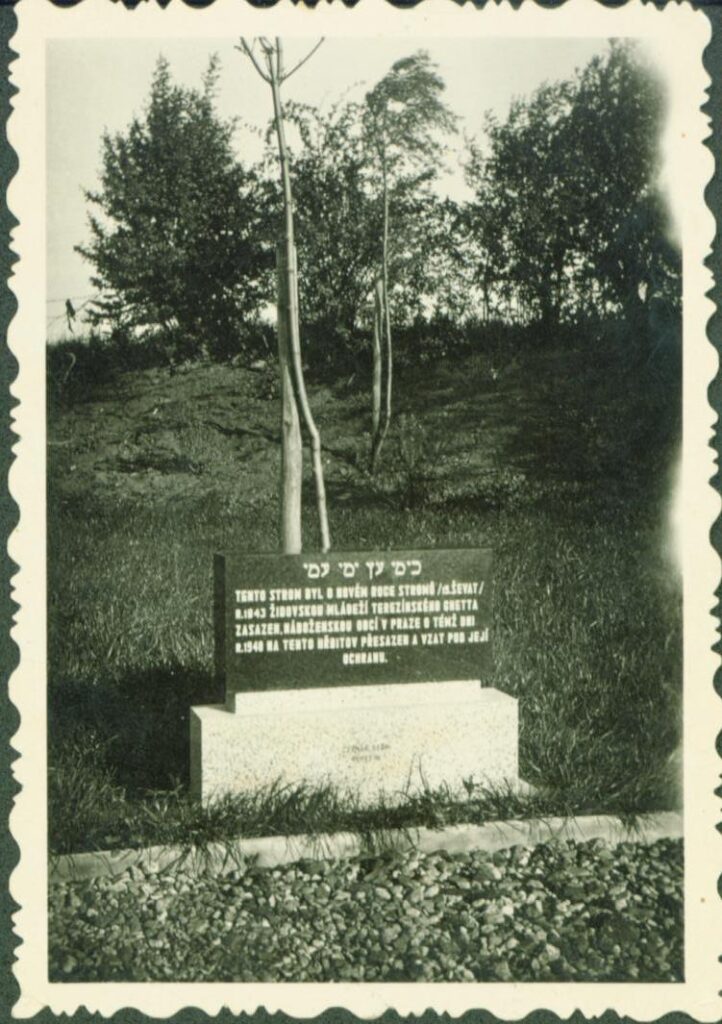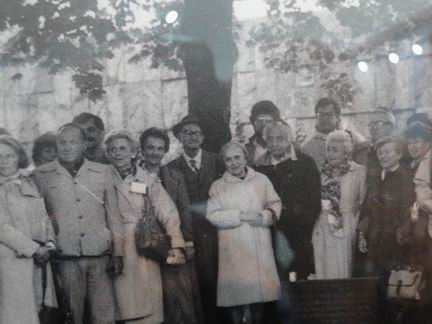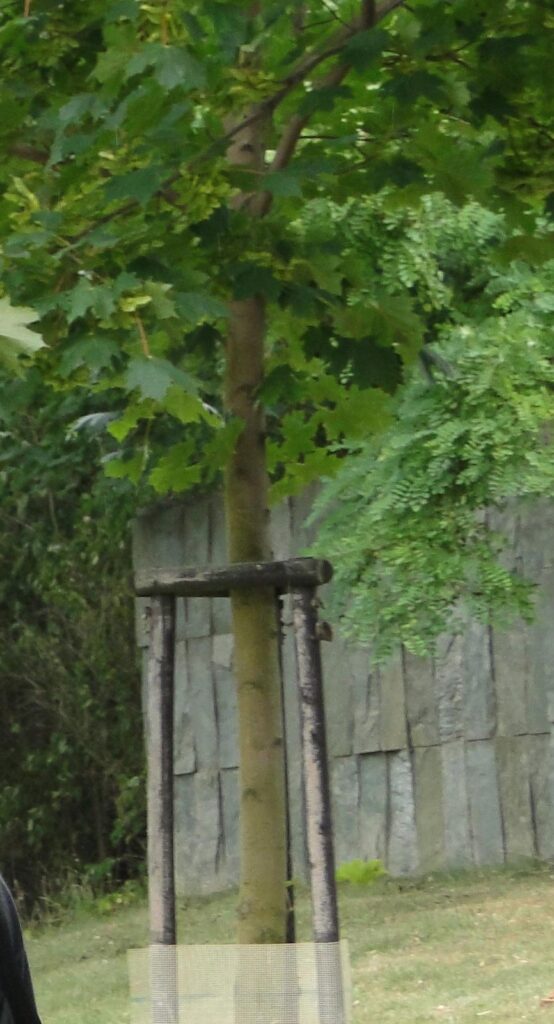This year marks the 120th anniversary of the birth of Irma Lauscherová. We were, therefore, delighted that her daughter, RNDr. Michaela Vidláková, complied with our request and wrote a short recollection of her mother´s life, complete with the story of the Tree of the Terezín Children.
A maple tree once stood in the Jewish cemetery in Terezín, located nearby the crematorium. A small memorial with a simple plaque marks the site, commemorating the fact that this tree was planted by the children of Terezín on the New Year of Trees, September 15, 1943. Today, only a bare remnant of the trunk remains, a result of the devastating flood that hit Terezín in 2002.
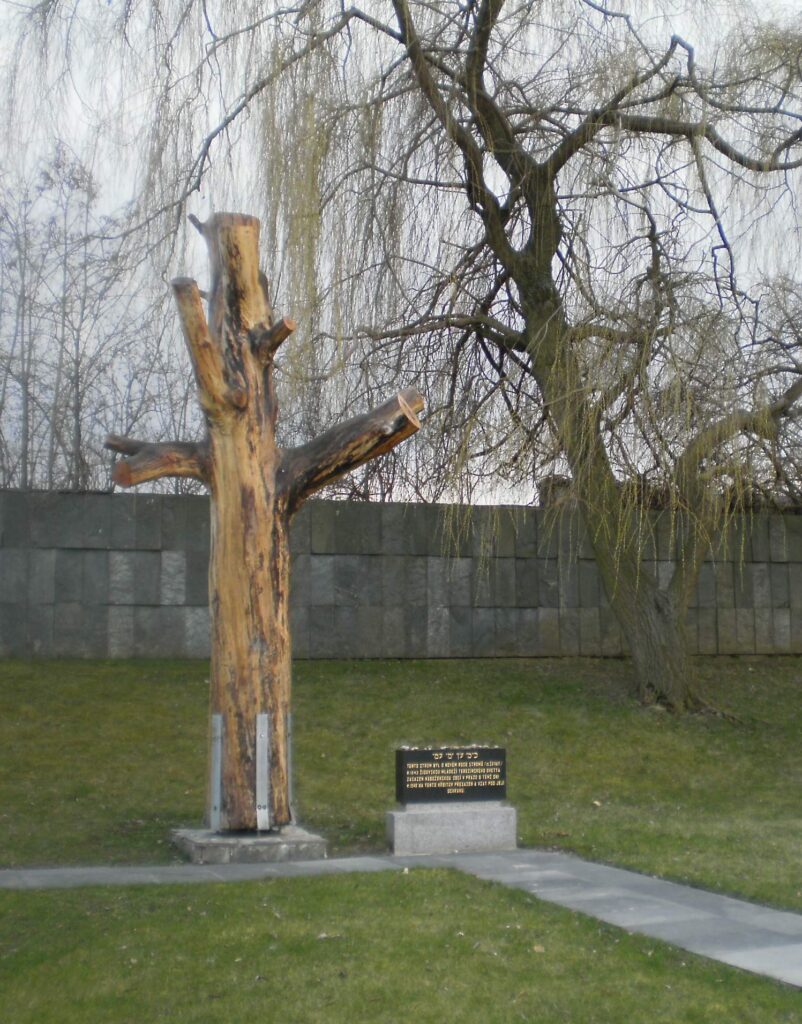
The planting of the tree was originally part of the efforts of dedicated educators to teach children in Terezín not only school subjects, which was done illegally anyway, but also basic Jewish traditions. In Israel, trees are planted to celebrate the New Year of Trees. And so someone, perhaps in a rubber boot on their way home from work outside the Ghetto, brought a small maple seedling. As it was still too cold to plant trees in January, the children together with their teachers ceremoniously planted it first in a large jar of beet jam. Only when the weather warmed up, they planted it into the ground in the backyard of the children’s home and took good care of it. Meanwhile, more and more children from Terezín were being transported to extermination camps, never to return. Many of their teachers and educators also perished. My mother, Prof. Irma Lauscherová (1904‒1985), was one of the teachers in the Ghetto. She had been a teacher at the Prague Jewish School since 1924, and she also participated in the tree-planting ceremony as an educator in the girls’ home. She was one of the few in Terezín who survived, and for the rest of her life she came to the tree to remember her murdered pupils. She also told the story to many groups, large and small, that she and my father accompanied to Terezin. During the previous regime, the Terezín Memorial was primarily focused on the Small Fortress ‒ the Gestapo Prison. The fate of the Jews was overlooked for years, there was no Ghetto Museum, Terezín was a garrison town for the Czechoslovak Army. My parents devoted themselves to accompanying those interested, especially from the USA and Germany, quite privately. After the war, the tree was ceremoniously transferred to the crematorium, and the Jewish community placed the aforementioned small memorial next to it.
One such group of American visitors included Jessica, the daughter of Mark Talisman (author of the famous exhibition in the US ‟Precious Legacyˮ), who took several seeds from the original tree with him and grew a direct offspring from them in Washington. Jessica had her Bat Mitzvah celebration shortly afterwards and chose the tree of the Terezín children as the main topic of her speech. The American composer Hermann Berlinsky was deeply impressed by this story and composed a beautiful and moving cantata on this theme. In the 1990s, when my mother was no longer alive, an event called Week of Friendship was held in Dresden. The cantata was performed to great effect under the title ‟Irma Lauscher’s Treeˮ in Dresden’s large church Annenkirche. Soon after, it also had one performance in Prague with a text by Arnošt Lustig in the Czech Brethren chapel in the city’s Vinohrady quarter.
I once also had the chance to show a group of Jewish tourists from Canada around Terezin. As you might imagine, I made sure to stop by the now robust and impressive tree and share its story. At the same time, I mentioned that I had one big dream: that an offspring of this tree might grow in Yad Vashem in Jerusalem. The Canadians seized the opportunity and found a dendrologist in Israel, who came over here, harvested the seeds and grew the tree. It was not entirely easy as the Israeli climate is not ideal for maple trees, but the project worked.
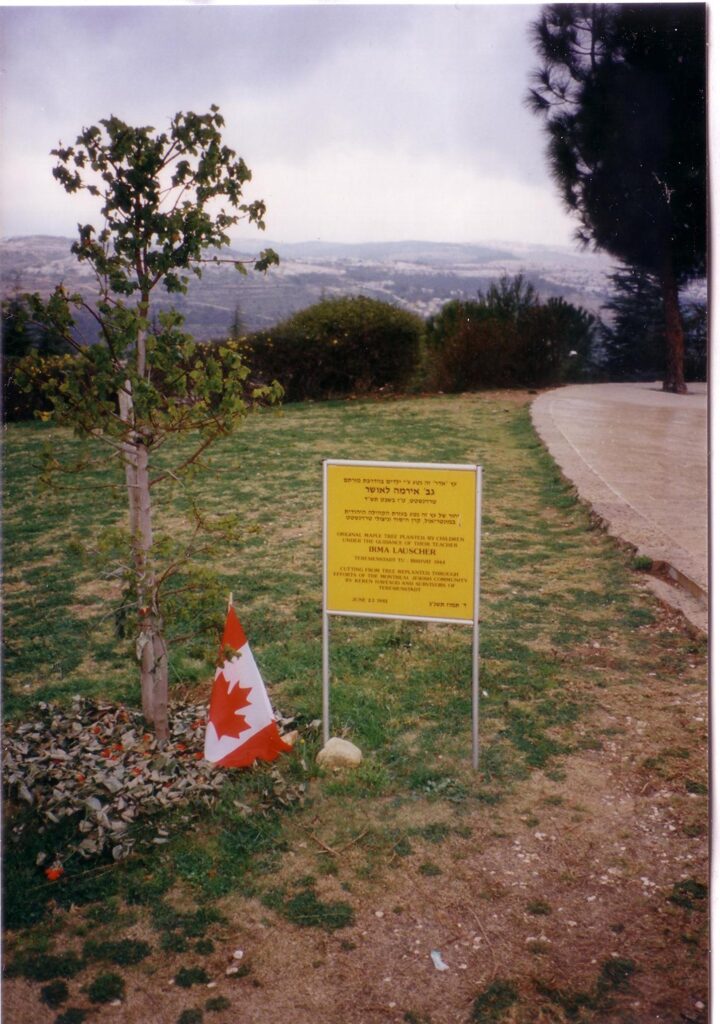
One such offspring was planted in New York, but there is some doubt as to whether it is a real offspring at all. Furthermore, JTA (Jewish Press Agency) published an article full of fabrications. For example, it claims that my mother is buried under the roots of the tree (but her grave is actually in the New Jewish Cemetery in Prague). The article also says that she bribed the Nazi guards to bring her the seedling (first and foremost, it was not my mother who procured the seedling, and there was no way she could have approached the Nazi guards or bribed them in Terezin) etc.
The Terezín Memorial provides specialized care for the tree and its remaining withered stump, ensuring its continued growth and offering its offspring to interested parties. One such tree is now flourishing in the garden of the Czech Embassy in Germany, where it was ceremonially planted by Tomáš Podivínský, then Czech Ambassador in Germany. Another progeny of the original tree recently traveled to Switzerland, once again brought to the country by Mr. Podivínský, who is currently serving as Ambassador Extraordinary and Plenipotentiary of the Czech Republic to the Swiss Confederation and the Principality of Liechtenstein. The President of the Czech Republic, Petr Pavel, planted it in early November during his state visit to Switzerland.
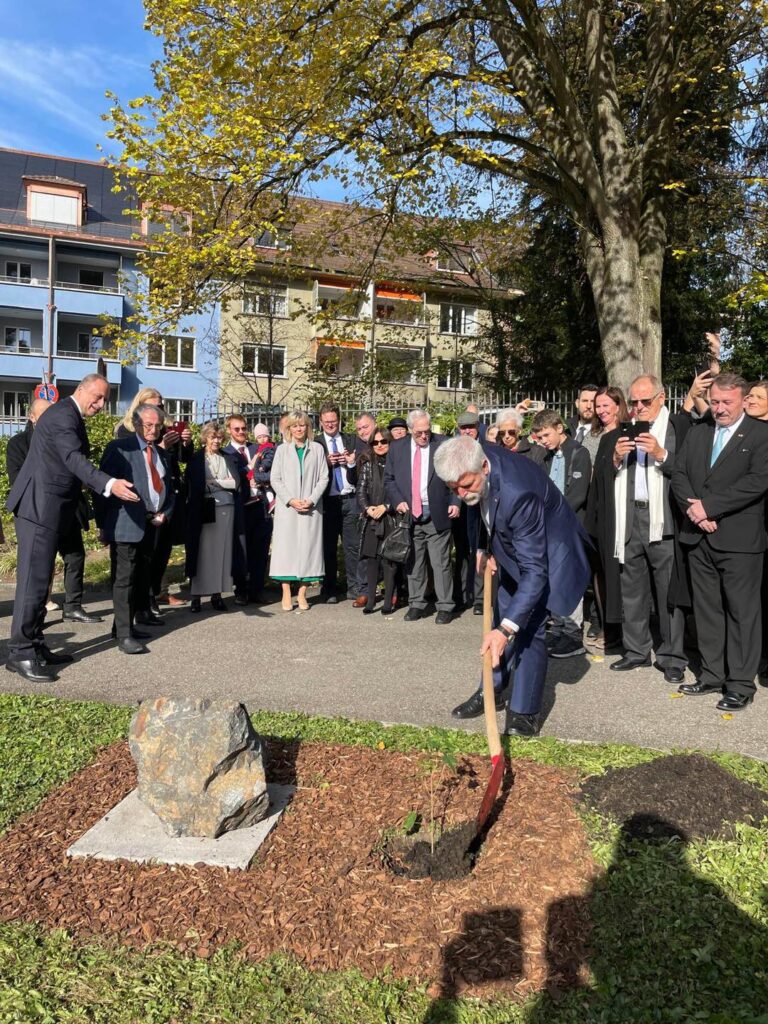
There are undoubtedly more such trees around the world. But most importantly, in the cemetery in Terezín, after the original tree died in a flood, its offspring keeps growing next to its dry, bare body and preserves the memory of the children who planted the original tree, lovingly tended it, watered it, but were not allowed to grow up themselves, and ended up in the hell of the extermination camps.
Michaela Vidláková

